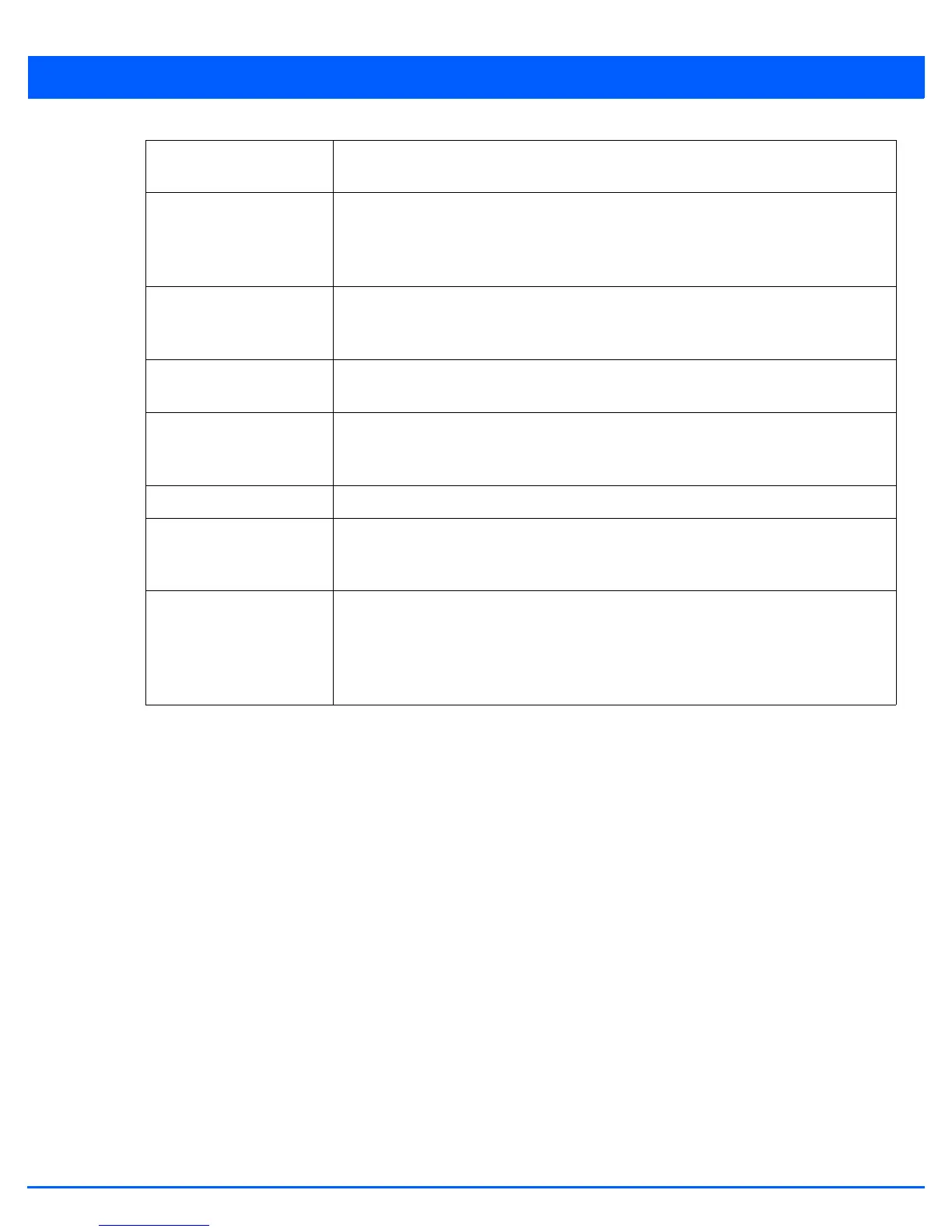Services Configuration 9 - 3
5. Select Add to create a new captive portal policy, Edit to modify an existing policy or Delete to remove an existing captive
portal policy.
The Basic Configuration tab displays by default. Define the policy’s security, access and whitelist basic configuration
before defining HTML pages for guest user access.
Captive Portal Server
Host
Lists the IP address (or DNS hostname) of the external (centralized) server validating guest
user permissions for the listed captive portal policy.
Captive Portal IPv6
Server
Lists the IPv6 formatted IP address (non DNS hostname) of the external (fixed) IPv6 server
validating user permissions for the listed captive portal policy. This item remains empty if
the captive portal is hosted locally. IPv6 addresses are composed of eight groups of four
hexadecimal digits separated by colons.
Captive Portal Server
Mode
Lists each hosting mode as either Internal (Self) or External (centralized). If the mode is
Internal (Self), the access point maintains the captive portal internally, while External
(centralized) means the captive portal is being supported on an external server.
Hosting VLAN Interface When Centralized Server is selected as the Captive Portal Server Mode, a VLAN is defined
where the client can reach the controller. 0 is the default value.
Connection Mode Lists each policy’s connection mode as either HTTP or HTTPS. Motorola Solutions
recommends the use of HTTPS, as it offers client transmissions a measure of data
protection HTTP cannot provide.
Simultaneous Users Displays the number of users permitted at one time for each listed policy.
Web Page Source Displays whether the captive portal HTML pages are maintained Internally, Externally (on
an external system you define) or are Advanced pages maintained and customized by the
network administrator. Internal is the default setting.
AAA Policy Lists each AAA policy used to authorize client guest access requests. The security
provisions provide a way to configure advanced AAA policies that can be applied to
captive portal policies supporting authentication. When a captive portal policy is created
or modified, a AAA policy must be defined and applied to authorize, authenticate and
account user requests.

